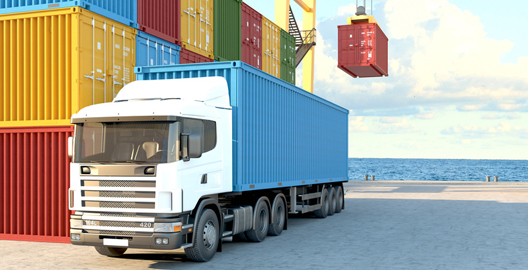Autor: Mark-Oliver Teuber
The quality and efficiency of the northern German ports’ hinterland connections define their competitive potential. Transport infrastructure is a key determinant of transportation accessibility to sales and procurement markets, which is an important requirement in location selection for companies in numerous industries. The regional competitiveness is influenced by the achievable market potential, which is, in turn, largely determined by the spatial distribution of the population, its income, as well as the transport infrastructure conditions. The attractiveness of a location increases with its market potential, i.e., the achievable purchasing power. Thus, agglomeration areas usually have a location advantage over less populated regions – they attract companies, suppliers and potential customers, by that promoting the economic growth of a region.
Despite its well-connected hinterland infrastructure, northern Germany, with the exception of Hamburg, is not a major market; and goods need to be reloaded onto trucks and rail cars in order to reach larger ones. Thus, a port located in a region with higher purchasing power has a competitive advantage over other ports – for example, the North Range ports of Antwerp, Amsterdam and Rotterdam have the best location in Europe, as they are within or close to rather densely populated regions (Belgium, Netherlands and North Rhine-Westphalia) with relatively high incomes. In this context, one of Rotterdam’s biggest advantages over other ports is its location on the Rhine that makes it possible to reach densely populated regions, such as the Rhine-Ruhr metropolitan area, in a short time. Thus, a large share of goods can be transported per inland waterway vessel which is the relatively most cost-effective way of transporting goods to the hinterland, leading to a competitive advantage over other port locations. The northern German ports are spatially similarly favourable but have less compact hinterland territories, and thus – lower potential purchasing power.
The ports of Bremen/Bremerhaven – unlike the Port of Hamburg – are located in peripheral regions; thus, of great importance is not only the location itself, but also, most of all, the quality of transport infrastructure. The competitiveness of these ports is relevant for increasing population and income, which makes them highly dependent on the quality and efficiency of their hinterland connections.
To measure the ports’ competitive potential, simple travel time matrices for different modes of transport are used. The achievable purchasing power of the hinterland territories is a prime determinant of port competitiveness. The assessment of gross domestic product achieved within a certain travel period via rail, road, inland waterways and intermodal freight transport provides a major indicator for the competitive positioning of the northern German ports.
The paper shows that the northern German ports have relatively good access to transport infrastructure in comparison with other North Range ports. Thence, the achievable purchasing power of their hinterland territories increases rapidly with travel time. In relative terms, the differences between the ports’ contributions to GDP within nine hours are much smaller than in two hours. This is due to the fact that in the case of Hamburg, the increase is lower than in the case of Bremen, since a comparatively higher contribution can be made within a rather short travel time due to the high population density in the Hamburg Metropolitan Region, implying a higher relative competitiveness of truck transport on short distances. Truck transports are generally more efficient on short distances. However, in the case of long-distance transport, intermodal and rail freight transport seem to be the most productive.

